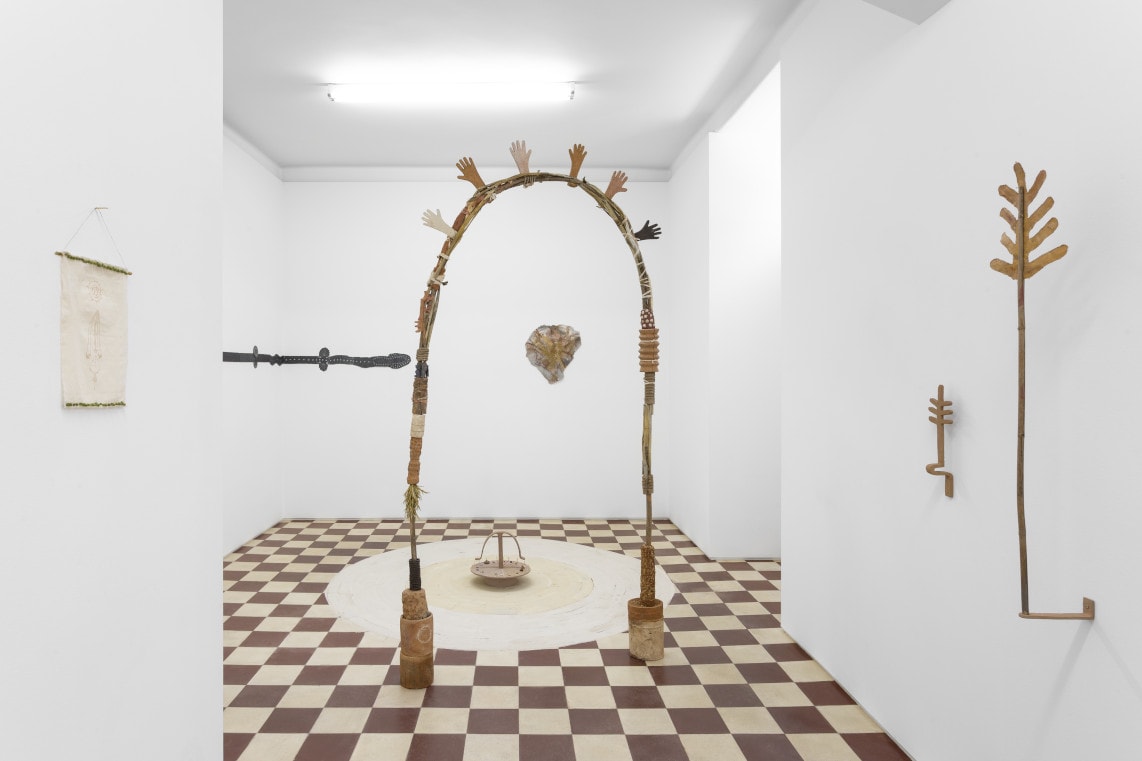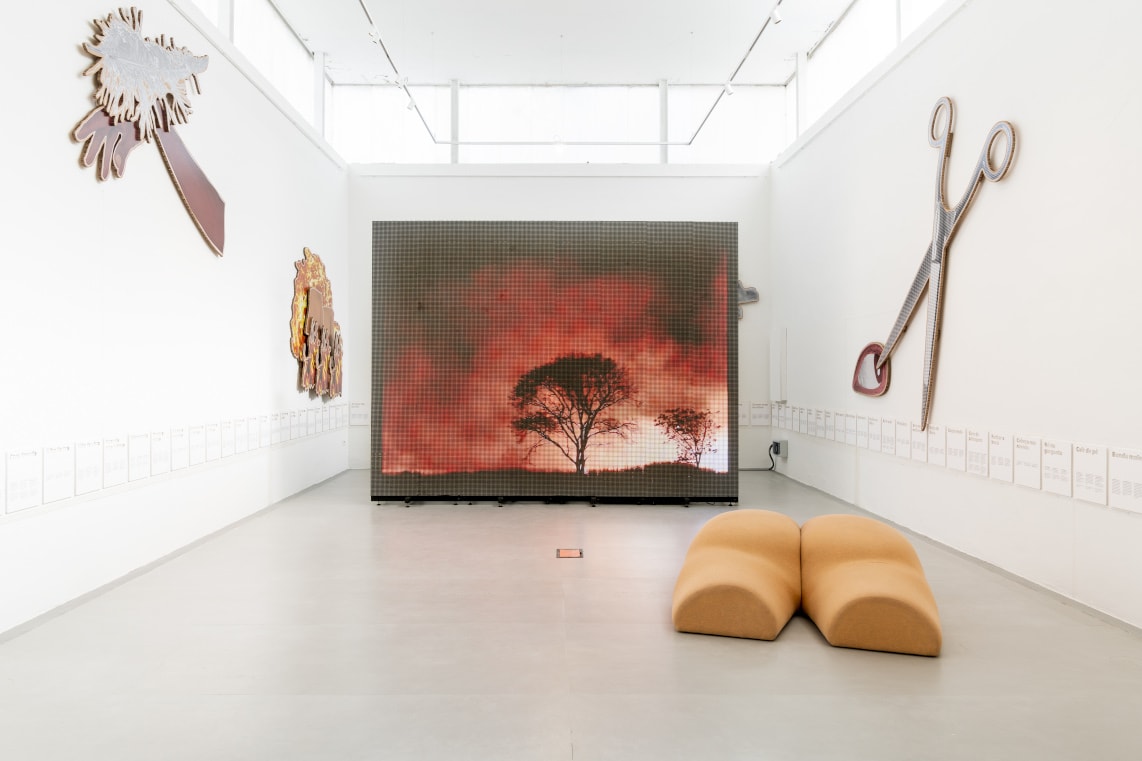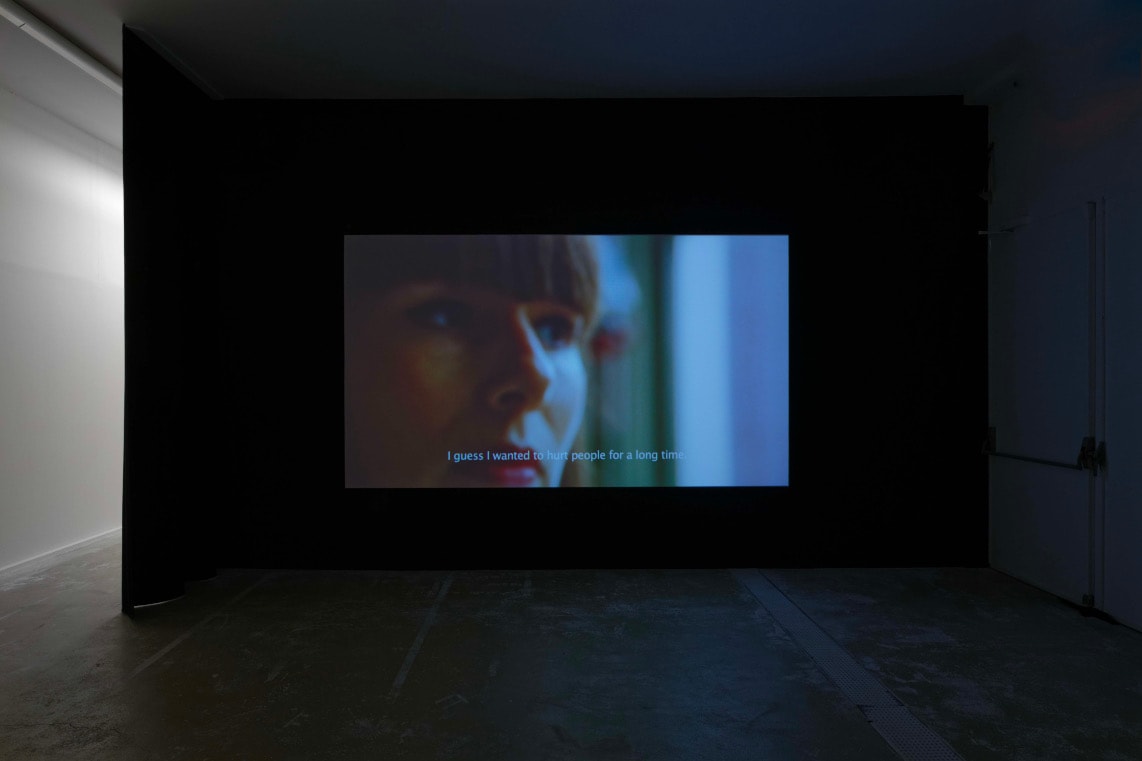With works by twelve Portuguese artists, the exhibition’s title has its origin in the book A vida invisível de Eurídice Gusmão[1], by Brazilian writer Martha Batalha.
This novel tells the story of two sisters, denouncing a certain female invisibility, in particular that of white middle-class women in Rio de Janeiro during the 40s.
This is not the first time that curator Raquel Guerra has taken an interest in these silent effacements. In 2019, at Casa-Museu Marta Ortigão Sampaio, Porto, she noted the odd absence of references to Marta Ortigão Sampaio herself, artist and collector. It was as if the name of the museum was only a tribute to the «wife of…», «daughter of…». The exhibition was called Fazer do fantasma uma pessoa viva, with works by five women artists.
Is the fate of such “ghost” that of all women in Portugal today? Well, female artists do not seem to be immune to this condition. How to explain the under-representation of women artists in art exhibitions, in public and private collections? Do the forty-eight years of dictatorship justify all the atavisms?
This age-old debate continued in Pontault-Combault, on the outskirts of Paris, on the exhibition’s opening day, with eight artists present and the curator. This “invisibility” is obvious to the participants, but the reasons and the answers are more complex. They spoke in Portuguese of feminism and politics, art and history, with simultaneous translation, but without any immediate consensus.
Without consensus or concessions could be another title for this multiple exhibition, organised in three sections. The French public can learn about the context of these artistic practices, discussions and reflections. The first section «questions the possibility for the artist to reconstruct her identity through self-representation» and not only «self-portrait», as the French translation seems to indicate. The second questions the female condition through the representation of other women. The third deals with the representation of invisibility. How to speak of that which is unseen?
In most of the works presented, the artists work with the body according to the artistic tradition that started in the 1970s. The body, one’s own or that of others, is an ambiguous and problematic object of representation, as creation continually transforms it. The result is often political and even radical, but not always. Several female artists reject hasty readings and favour a formal renewal of the feminist(s) discourse(s). Despite these apparent disagreements, there is in all of them the will for emancipation, for a break with the history of representation. Women are no longer the mere object of the male gaze: they reinvent the vision of themselves, simultaneously overturning any reduction to non-subjects.
This constant journey between the intimate and the universal is visible in the work of Rita Castro Neves. In Marat, a photograph of the artist’s bathroom, reference is made to Jacques-Louis David’s painting, in which the French revolutionary appears dead in his bathtub. In Tempos de Medusa. Alopecia Areata, the artist reveals her own hair loss, a common consequence of highly stressed emotional states, especially in women. The great History and the small daily dramas, or vice-versa, in a domestic agora.
Ana Janeiro’s work, with photographs and performances extracted or inspired by archives, allows her to show what is not immediately visible in the images. In The Archive is present, she works on family photo albums. The situation of women in colonial Portugal and the life of her grandmothers (maternal and paternal) are reinterpreted by the artist. Does the discomfort of the photographic poses hide subtle mutilations/limitations of women’s bodies? Class issues? History – rendered body and pain by the observation of the domestic – set into play again looms large.
It is impossible not to think of Carol Hanisch’s The Personal is Political (1970) when we see the work of Bárbara Fonte, who lives and works in the idolatrous Braga. The faith that the artist claims to have does not prevent her from working critically on the dogmas and symbols of the Catholic religion, as in Fluxo de intervalos (2016), a performance carried out at the Sanctuary of Bom Jesus. On the exhibition poster, a portrait of the artist with (male?) horns casts one last glance at the viewer. Walking away, it seems to drop us off in a magic ritual, perhaps already finished. Visiting the exhibition, and its several and contradictory visions, can be read as an incantation of a certain history imposed on women.
The exhibition A Vida Invisível, by Ana Janeiro, Bárbara Fonte, Brígida Mendes, Ção Pestana, Carla Cabanas, Graça Sarsfield, Júlia Ventura, Manuela Marques, Margarida Paiva, Rita Barros, Rita Castro Neves, São Trindade, curated by Raquel Guerra, is at Centre Photographique d’Île-de-France (CPIF), Pontault-Combault (Paris), France, until July 17, 2022.
[1] Editora Companhia das Letras, Brazil, 2016


